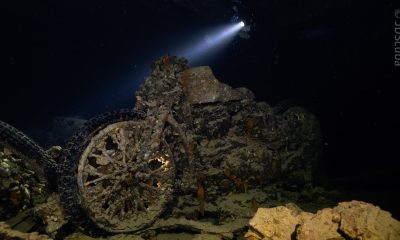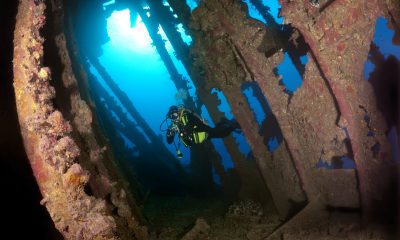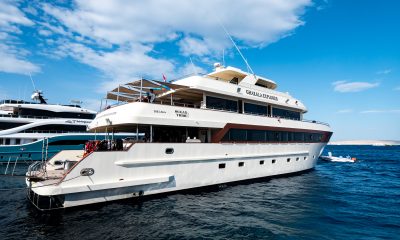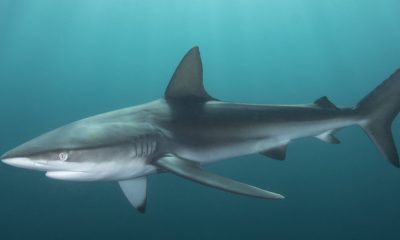News
Jim & Cary Yanny’s Guide to Diving in the Maldives: Part 5
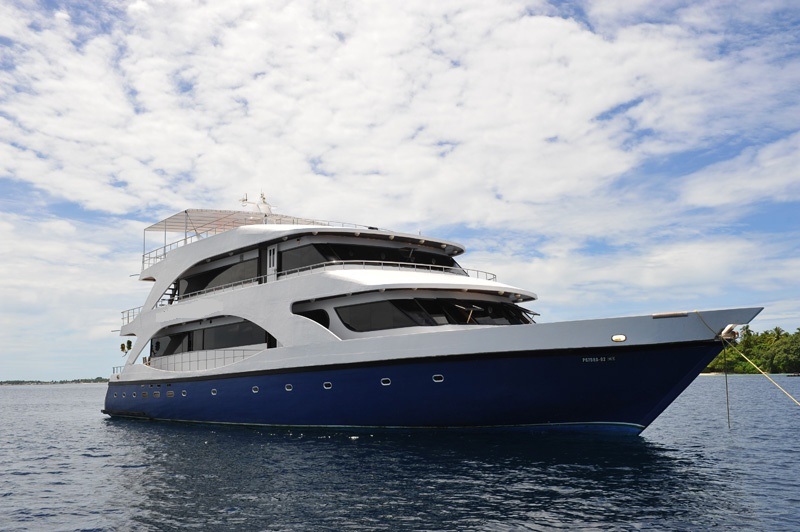
Part 5: Emperor Voyager
Jim and Cary report on their trip to visit various resorts and liveaboards in the Maldives. In Part 5, they enjoy a week’s safari aboard Emperor Voyager to end their two week tour of the Islands…But we have a sneaky suspicion that they’ll be back next week with a special bonus instalment on another liveaboard. Watch this space!
After a wonderful week of island-hopping, on Saturday morning we sadly said goodbye to Vilamendhoo Island Resort and joined the seaplane for a short flight to Male knowing that further delights were in store; our four friends were arriving that morning on the direct British Airways flight from Gatwick and we would all be going on a week-long safari together.
Once we got to Male Airport we met the Emperor Maldives Rep, Alim, outside the arrivals hall. Our friends’ flight landed on time and Alim showed us to a nearby café where we waited and ate breakfast while he collected the rest of his guests. Once everyone was there, we proceeded on foot to the waiting Dhoni, just 50 metres from the airport, got aboard and cast off to transfer to our waiting liveaboard. Within a few minutes we’d arrived at Emperor Voyager where we were greeted with warm smiles, cold towels and welcome drinks as luggage was sorted out, dive gear sent to the dive Dhoni and personal bags sent to cabins.
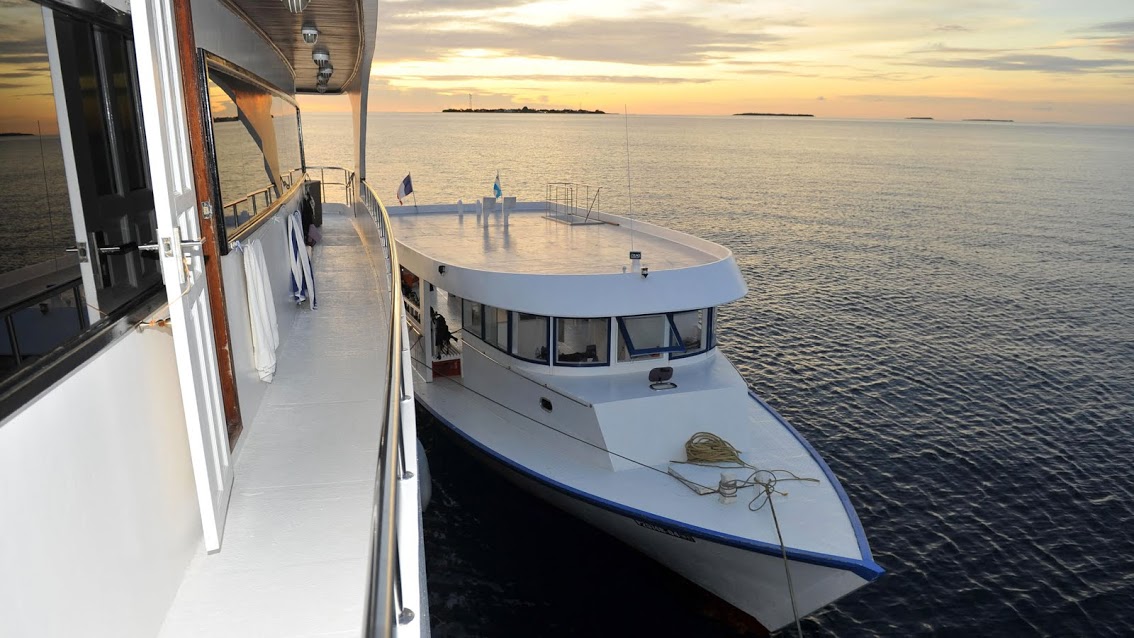
It’s always an interesting moment seeing your liveaboard for real for the first time and not just from pictures; it’s a mix of excitement and trepidation. Having just spent a week in upscale island resorts, we realised that we’d have to temper our expectations about what to expect from a boat but at the same time we hoped Emperor Voyager would not disappoint us as far as liveaboard standards go. (We’ve been on some great liveaboards, including Emperor Red Sea, Aggressor and fancy Indonesian vessels, so our bar is set high!)
At first sight, the salon of Emperor Voyager did not blow us away. It looked roomy and the pub-style bar in the corner was a nice touch but the décor certainly isn’t glitzy. Not that glitzy is what we look for, of course, but let’s just say that cosmetically the first impression of her was nothing special. It also isn’t air-conditioned and, as were sat still at anchor in Male Harbour, it felt a bit sticky. However, we were assured that once we set sail the breeze would clear the air out and things would get much more pleasant (which turned out to be the case).
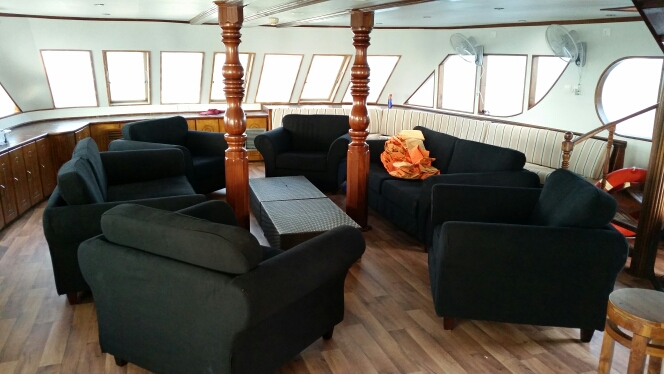
It was time for our welcome briefing so we were ushered to sit down and relax on one of the sofas. Instantly I heard the same comment from many guests, “Ooh, these are comfy”. The briefing was given by our Emperor hosts for the week, Eva and Patrick, an instructor couple from the Czech Republic and Belgium. It was a comprehensive boat briefing on a par with any of the previous ones we’ve had on other liveaboards, focusing on safety and explaining our daily programme in detail. As they talked, maps and safety points were displayed on a large plasma screen on the salon wall, which really helped to add to the clarity.
After the welcome briefing, we were shown to our cabin. At this point our impression of Emperor Voyager altered significantly. The last liveaboard we’d been on was in the Red Sea and cabins on Egyptian boats are, well, “cosy”. However, Emperor Voyager is Maldivian-built and this makes an enormous difference to comfort. “Why?”, I hear you ask. Because they’re wider and this is really felt most in the cabins. The first sign of that difference was the full-size double bed! It was high up with a thick mattress and loads of storage space underneath. Furthermore, there was a full-size wardrobe in the cabin. The bed was simply but tastefully furnished with crisp white sheets and a duvet. We found the mattress to be extremely comfortable.
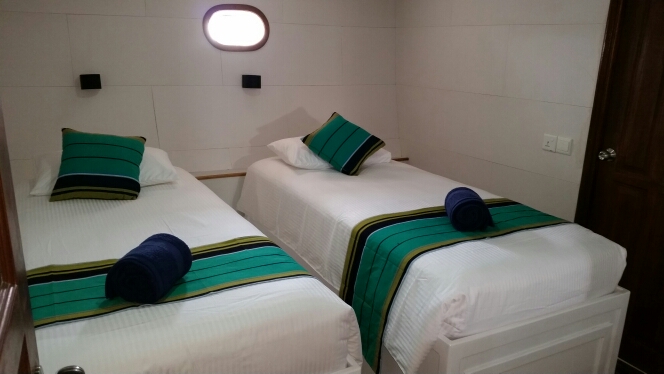
Our ensuite bathroom was significantly larger than any we’d previously experienced and it all worked; hot water on demand, a loo that flushed each time without any hassle, a large glass basin with mixer taps, towels and bathrobes provided. (If you’ve ever been on a liveaboard you’ll understand why I am mentioning these points; they’re just not to be taken for granted).
Oh yes, it was air-conditioned and it worked perfectly. As someone who doesn’t like sticky heat, I was now relieved and smiling. Happy days!
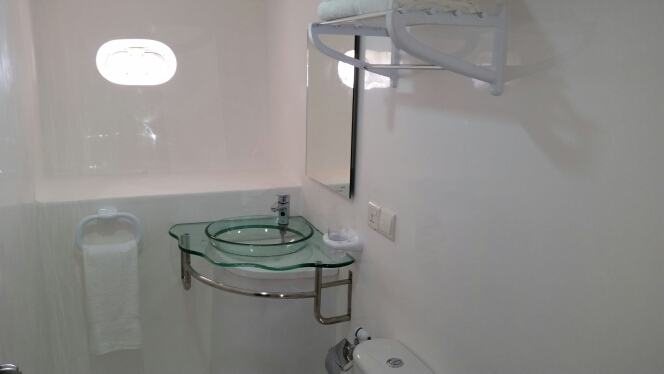
Meals were served in Emperor Voyager’s outdoor dining room on the upper deck with the exception of one dinner, a wonderful beach BBQ on an island. All meals were buffet-style and included at least two carb dishes (rice, potato, pasta), a meat dish (no pork) and a curry, plus one mixed vegetable dish and a delicious salad. We had a full house of twenty guests and it was noticeable that everyone was very satisfied with the food quality and no one ever went hungry. In fact, the opposite – we all ate far too much and found ourselves yearning for the next dive, so we could burn some calories. “Point me into a current, please!”
Special dietary requirements were handled with ease and breakfast included a choice of fried, scrambled, poached eggs or an omelette (ordered the day before), plus beef sausages, cheese, fruit, juices, hash browns, cereals, toast with condiments and tea and coffee. Between dives unlimited tea and coffee plus biccies were also available in the salon.

A nice touch is that Emperor Maldives gave us individual plastic refillable water bottles, which we wrote our name on with a permanent marker and then used for the week, refilling them from the dispensers. Because we each had our bottle in the salon, it was a visual reminder that helped us to stay hydrated (essential in the tropics and especially when diving) whilst at the same time much more environmentally responsible than going through a mountain of disposable plastic bottles. Not to mention these name-drop water bottles are free souvenirs for us to take home. Kudos, Emperor.
Other than this, the boat offers decent speed WiFi (chargeable) but limited to emails and browsing, not big downloads/uploads. There are comfy beanbags in the salon and a large sundeck with sun beds and hammocks.
OK, let’s talk about the diving.
Obviously the main attractions of liveaboard diving are the convenience and variety of sites. We chose Emperor’s “Best of the Maldives” route, which was around Vaavu, Male and Ari Atolls. In terms of variety and quality of dive site it delivered in spades and we couldn’t have been more pleased with our dives even as a highly experienced (if I say so myself) group, containing a Course Director, two Master Instructors and an IDC Staff Instructor. Our main excitement stemmed from the regularity of big fish sightings – basically on every dive – from tuna, to trevally, barracuda, sharks (whale, black tip, white tip, reef) and manta, mobula (devil rays) and stingrays. Add to this morays, turtles, shoals of triggerfish, schools of snapper, reef fish galore; the list goes on. On some sites we also had lovely coral and also some critters, maybe not to compare with Egypt and Indonesia but then let’s not forget that this is in addition to all those big fish. Simply put, it was a week of some of the best diving we have ever enjoyed! It’s impossible to do it full justice in the space of a few lines but for a better idea please watch the daily videos posted on Facebook by our friend, Jan van der Horst, as a picture says a thousand words and yet, good as Jan’s videos are, nothing can come close to substituting for actually going there and getting underwater.
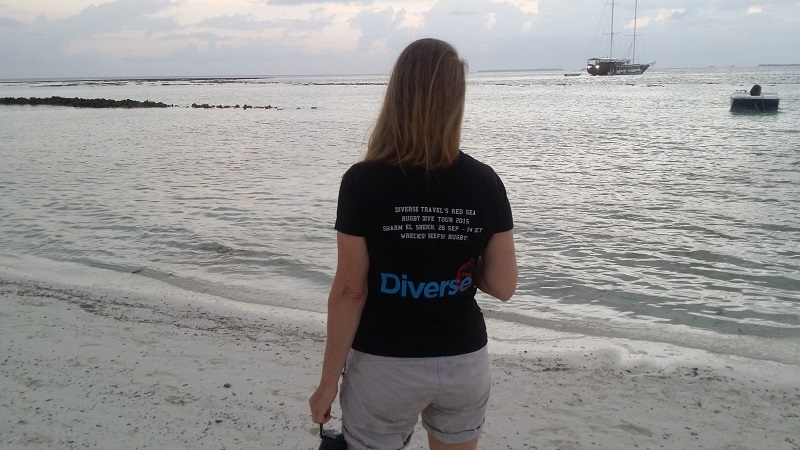
In terms of convenience I have to confess that this was my and Cary’s first trip to the Maldives and therefore also our first experience of Dhoni diving. (Our whole trip was put together for us by our our Maldives expert, Holly.) And, boy, do we love Dhoni diving! The dive deck is like a football field, each diver having his/her own station. After the dives you just leave your cylinder in the rack and it gets refilled for your next dive. There are hangers for wet suits and sweet water showers to wash out ears and get the salt off after each dive. Numbered towels were provided (and dried each night and replaced with a completely fresh set mid-week). The Dhoni was so wide, there was no slapping someone in the face when putting on fins. Basically it’s a whole day-boat, separate to your liveaboard, meaning that all the noise of compressors is kept far away from the main boat; it also means much more living space on the liveaboard. As diving goes, it’s a pretty luxurious way to do it. (Yes, our boat wasn’t special in this regard, as all Maldives liveaboards offer Dhoni diving, but I’m comparing it with other destinations, for those who haven’t yet had the pleasure of diving in the Maldives.)
Emperor Maldives provided us with three guides, which meant that our group of six were able to dive with our own guide, thereby not putting any compromise on our dive profile/plan – we were able to do our own thing on all dives, which we loved. Our Maldivian guide, Rauf, was one of the best we’ve ever had the pleasure of being guided by. He was experienced and very laid back BUT still communicative and gave excellent, comprehensive dive briefings. Remember that our group had a bit of experience in it, so we would have picked up any shortcomings without fail. No pressure, then! Rauf came through with flying colours, so much so that we’ve all agreed that we would request him on our next trip…which I suspect may be sooner than he thinks, poor chap!
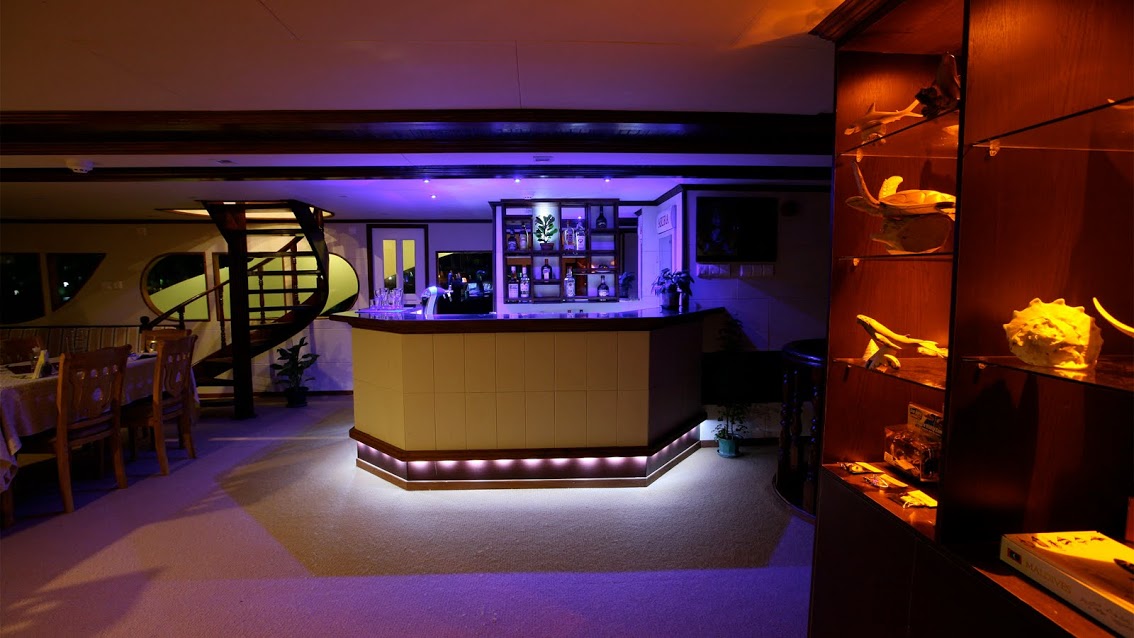
I really could go on a lot more about our week on Emperor Voyager, but I won’t. Rather, let me attempt to just sum it up in a final paragraph.
We’ve seen a lot of fancy looking boats over the years but honestly a lot of them don’t work half as well as they look. Emperor Voyager is a decent looking boat, as you can see from my pictures. Is she the fanciest looking? No, but so what – this boat works! I’ve talked about “checking boxes” a lot in my report, well Emperor Voyager checks all the boxes that a reasonable diver should be looking for when choosing their liveaboard. After every morning dive we returned to a made-up cabin with clothes folded, bathroom re-stocked, bins emptied. The food was perfect. The diving organisation was perfect. The price was good value. What more do you need on a liveaboard? All boxes checked and, a few short days after saying goodbye to those fabulous island resorts, we’d already remembered why serious divers go on liveaboards.
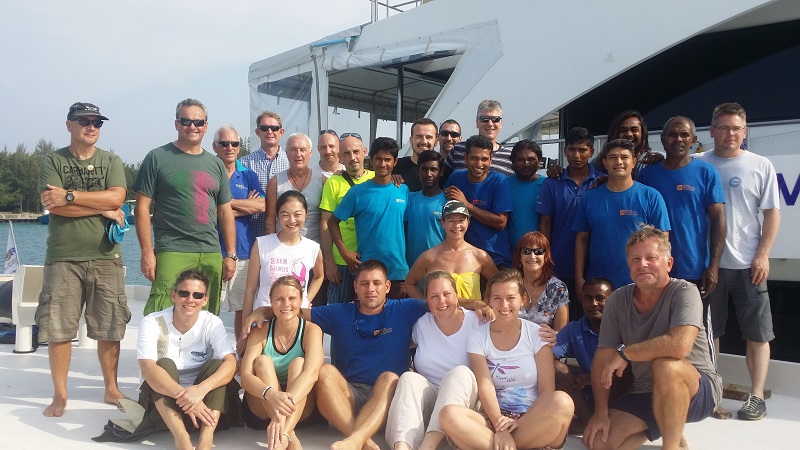
OK, just one more (very short) paragraph about Voyager! Kindly indulge me.
Two words keep coming into my heads about how to describe this boat. The first word is “Ronseal”. The other is “consistent”. Emperor Voyager delivered a consistent service, which is one of the most important things we look for – not one good meal, followed by a bad one, or a good dive organisation followed by a mess, or a clean room and then a dirty bathroom the next day. It doesn’t try to do too much, preferring to stick with what it knows and does oh so well. (OK, well actually it did throw in a couple of fabulous extras, such as the beach BBQ and the incredible manta night snorkelling off the back platform…the cherries on top.) Add to this the special ambiance that only a liveaboard full of divers can provide and you simply can’t do better. If you love your diving and haven’t been to the Maldives, then I urge you to start making your plans to go. Though the options are endless, you really don’t need to look any further than Emperor Voyager for your first trip.
So that’s it for our reports on the Maldives. We’ll be back there soon, of that I’m sure. I’ve added some general information to round things off:
Emperor Maldives has the largest dive liveaboard fleet in the Maldives, with a boat to suit every budget, from Emperor Atoll (with just 12 berths, she’s perfect for private groups and families) all the way up to the gorgeous, hotel-standard Emperor Serenity. With facilities such as Jacuzzis and extras including massage services, snorkelling trips and island visits, there really is a boat for everyone, including non-divers (and it’s a value-for-money way to see the Maldives, compared to an island resort). They have guaranteed sailings every Saturday and Sunday, meaning that you can enjoy a spectacular liveaboard holiday in the Maldives in just one week. Single travellers can cabin-share to avoid pricey single supplements. There’s a choice of routes, from the excellent Best of Maldives to routes for more experienced divers (100+ dives) such as Deep South & Southern Sharks or South Central 7 Atolls, where one has a greater likelihood of spotting the larger shark species such as silky, tiger, hammerhead.
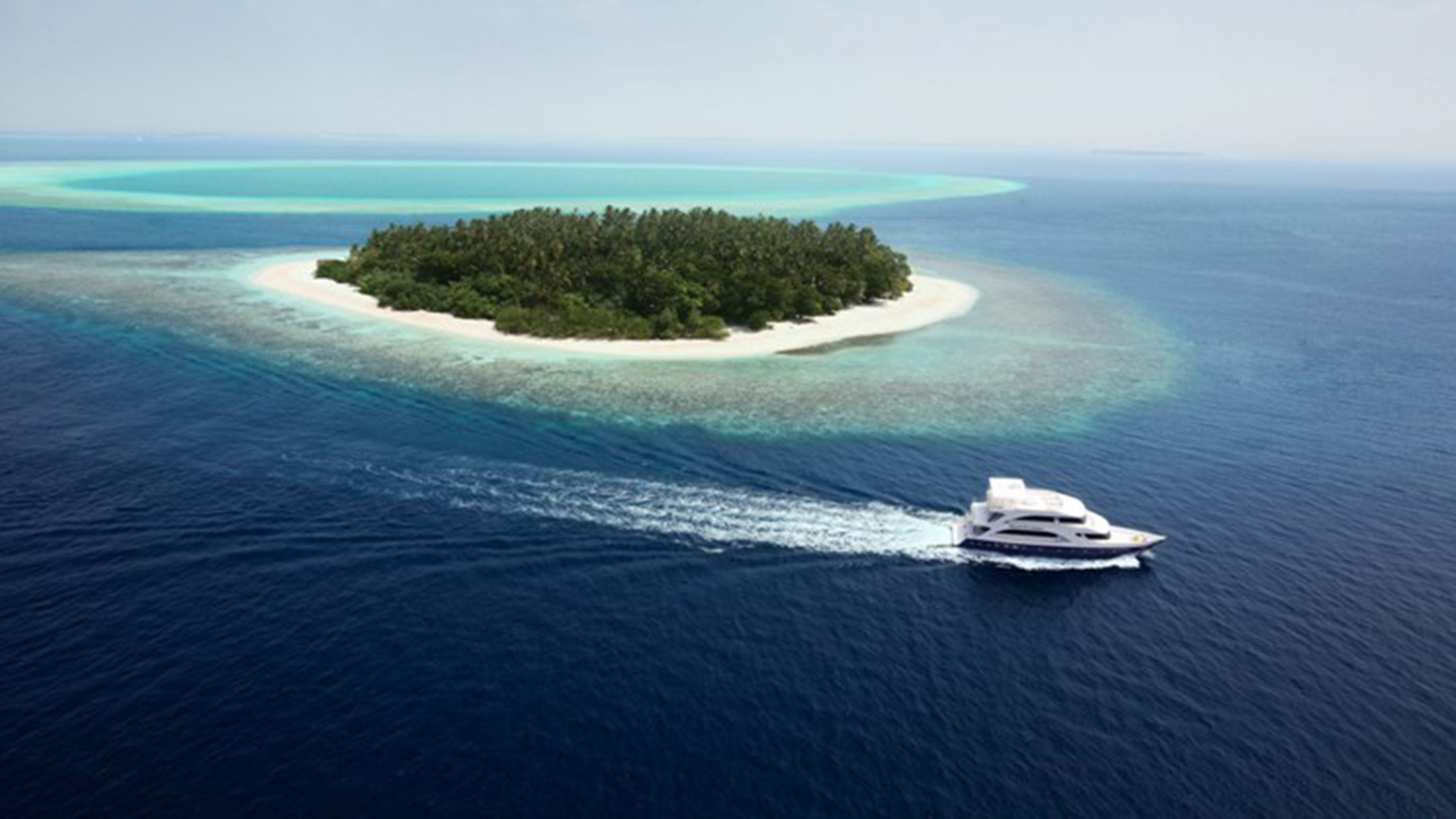
The Maldives has two seasons; from December to April is the drier season, but it’s basically a year-round dive destination. If you need further details, just ask us.
Cary and I opted not to take the direct flight, as we wanted to experience a transit stop (it’s also cheaper than the direct BA flight), so we went with Etihad, transiting in Abu Dhabi. We found the airline excellent, especially the A380 from London to Abu Dhabi, with good food and service and interactive entertainment system. Abu Dhabi Airport has affordable transit lounges to make the wait that bit more comfortable. There are plenty of flight options from the UK to the Maldives, including Emirates (via Dubai), Qatar Airways (via Doha) and Sri Lankan (via Colombo). This means you can fly from regional airports around the UK.
Given the amazing diving, wonderful hotels and liveaboards and easy and relatively affordable flight access, the Maldives is the perfect dive destination. Do yourself a favour – go!
Thanks for reading our reports. Until we explore the next destination…
Jim and Cary own and run UK-based tour operator Diverse Travel. To find out more about the Maldivian itineraries that Diverse Travel offer, visit www.diversetravel.co.uk/maldives.

Gear News
Scubapro Free Octopus Promotion 2024
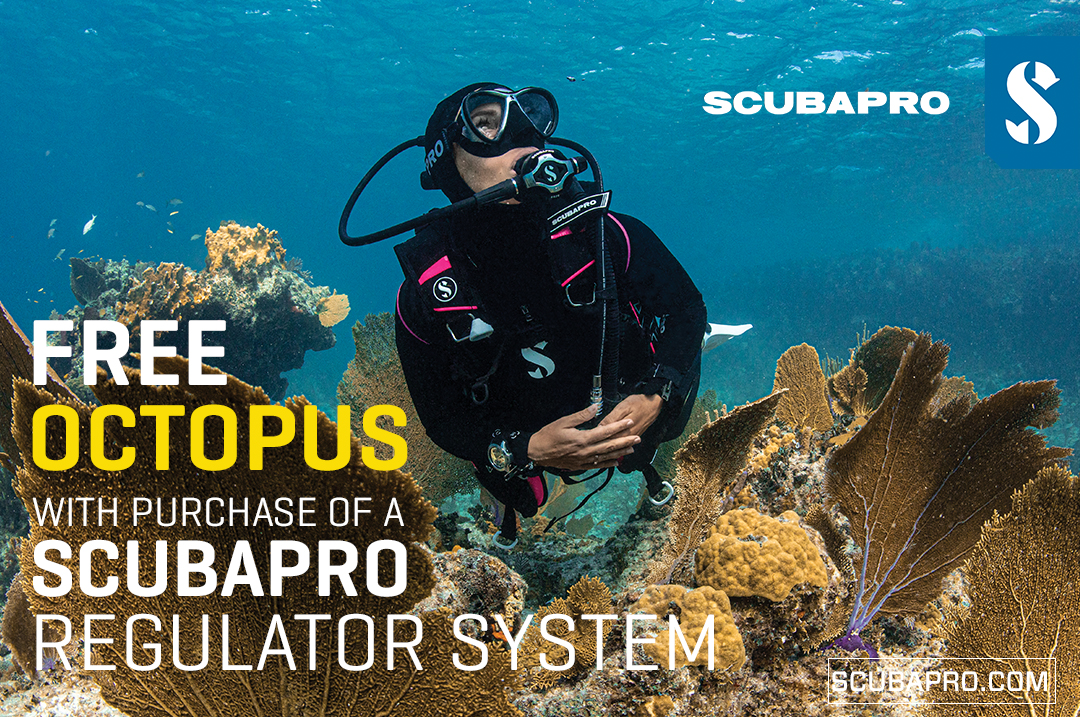
Free Octopus with every purchase of a SCUBAPRO regulator system
Just in time for the spring season, divers can save money with the FREE OCTOPUS SPRING PROMOTION! Until July 31st SCUBAPRO offers an Octopus for free
with every purchase of a regulator system!
Get a free S270 OCTOPUS with purchase of these combinations:
MK25 EVO or MK19 EVO with A700
MK25 EVO or MK19 EVO with S620Ti
MK25 EVO or MK19 EVO with D420
MK25 EVO Din mit S620Ti-X
Get a free R105 OCTOPUS with purchase of the following combinations:
MK25 EVO or MK19 EVO with G260
MK25 EVO or MK17 EVO with S600
SCUBAPRO offers a 30-year first owner warranty on all regulators, with a revision period of two years or 100 dives. All SCUBAPRO regulators are of course certified according to the new European test standard EN250-2014.
Available at participating SCUBAPRO dealers. Promotion may not be available in all regions. Find an authorized SCUBAPRO Dealer at scubapro.com.
More information available on www.scubapro.com.
Blogs
Northern Red Sea Reefs and Wrecks Trip Report, Part 3: The Mighty Thistlegorm
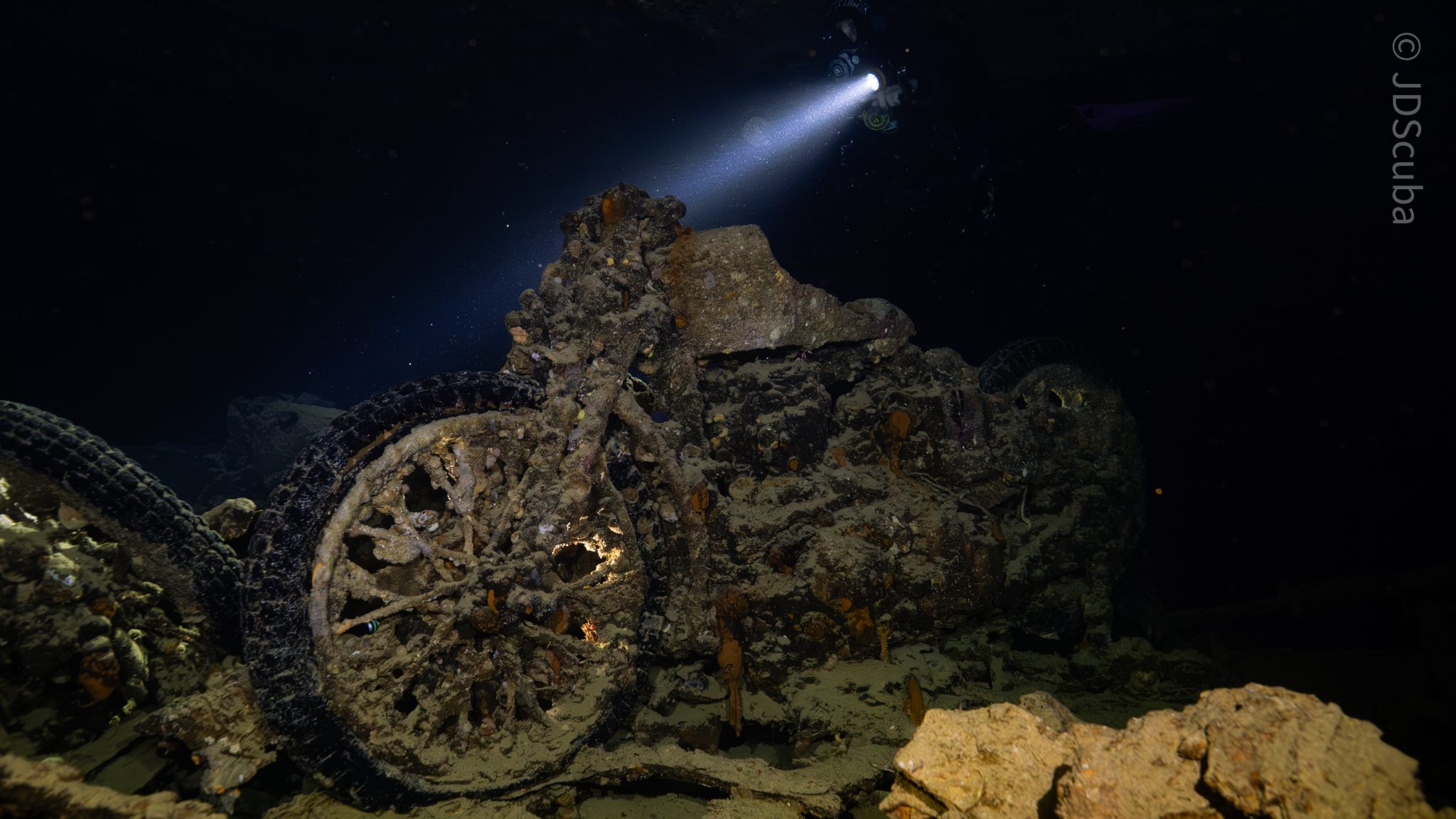
Jake Davies boards Ghazala Explorer for an unforgettable Red Sea diving experience…
Overnight, the wind picked up, making the planned morning dive a bit bumpy on the Zodiacs to the drop point on Thomas Reef. There, we would dive along the reef before descending through the canyon and then passing under the arch before ascending the wall with a gentle drift. The site provided great encounters with more pelagic species, including shoals of large barracuda, tuna, and bigeye trevally.
Once back on the boat, it was time to get everything tied down again as we would head back south. This time, with the wind behind us, heading to Ras Mohammed to dive Jackfish Alley for another great gentle drift wall dive before then heading up the coast towards the Gulf of Suez to moor up at the wreck of the Thistlegorm. This being the highlight wreck dive of the trip and for many onboard, including myself, it was the first time diving this iconic wreck. I had heard so much about the wreck from friends, and globally, this is a must on any diver’s list. Fortunately for us, there was only one other boat at the site, which was a rarity. A great briefing was delivered by Ahmed, who provided a detailed background about the wreck’s history along with all the required safety information as the currents and visibility at the site can be variable.
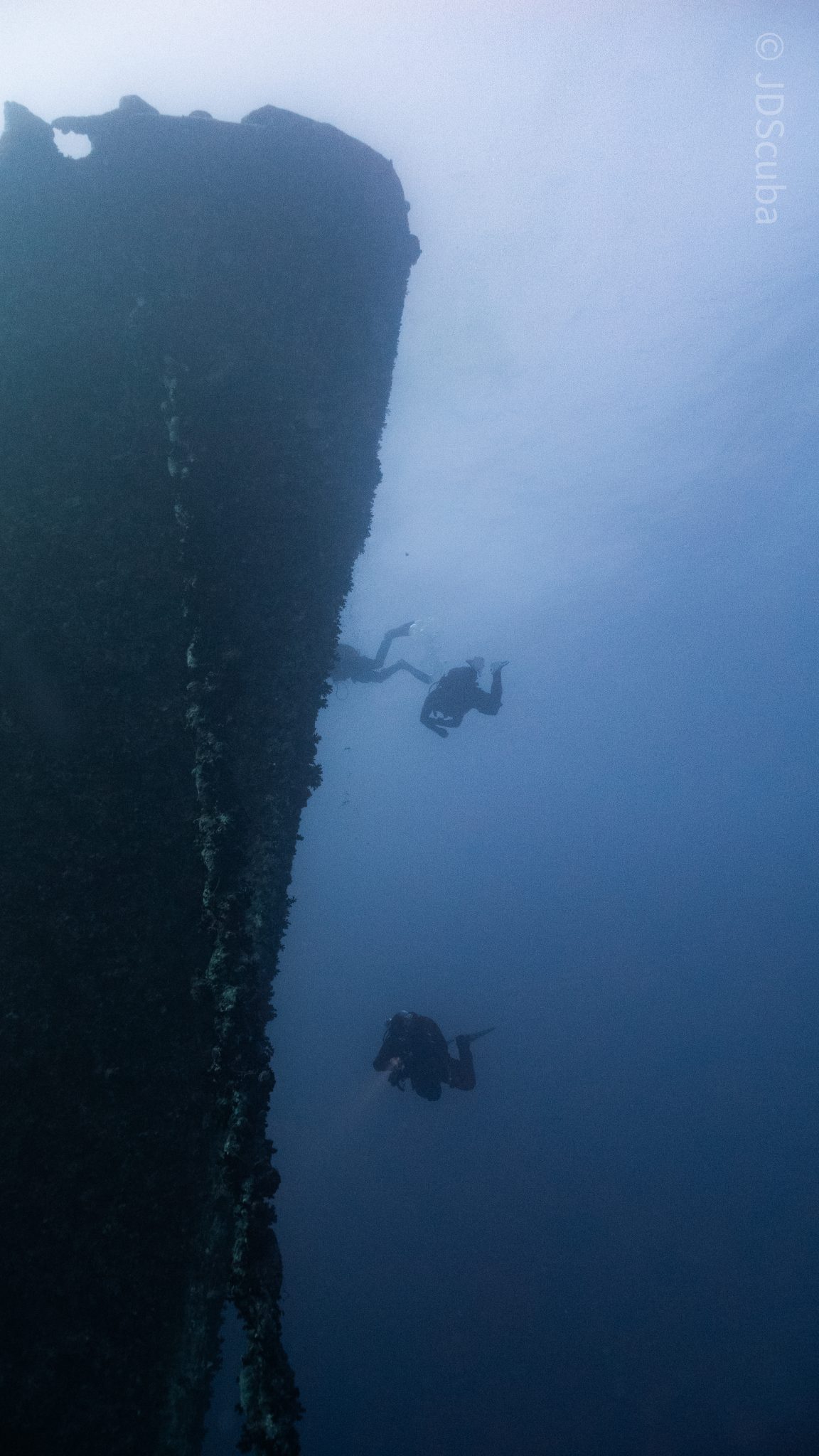
Kitting up, there was a lot of excitement on deck before entering the water and heading down the shoreline. Descending to the wreck, there was a light northerly current which reduced the visibility, making it feel more like the conditions that can be found off the Welsh coast. At 10m from the bottom, the outline of the wreck appeared as we reached the area of the wreck which had been bombed, as our mooring line was attached to part of the propeller shaft. Arriving on deck, instantly everywhere you looked there were many of the supplies which the ship was carrying, including Bren Carrier tanks and projectiles that instantly stood out.

We headed around the exterior, taking a look at the large propeller and guns mounted on deck before entering the wreck on the port side to take a look in the holds. It was incredible to see all the trucks, Norton 16H, and BSA motorcycles still perfectly stacked within, providing a real snapshot in time.

Overall, we had four dives on the Thistlegorm, where for all of the dives we were the only group in the water, and at times, there were just three of us on the whole wreck, which made it even more special, especially knowing that most days the wreck has hundreds of divers. Along with the history of the wreck, there was plenty of marine life on the wreck and around, from big green turtles to batfish, along with shoals of mackerel being hunted by trevally. Some unforgettable dives.
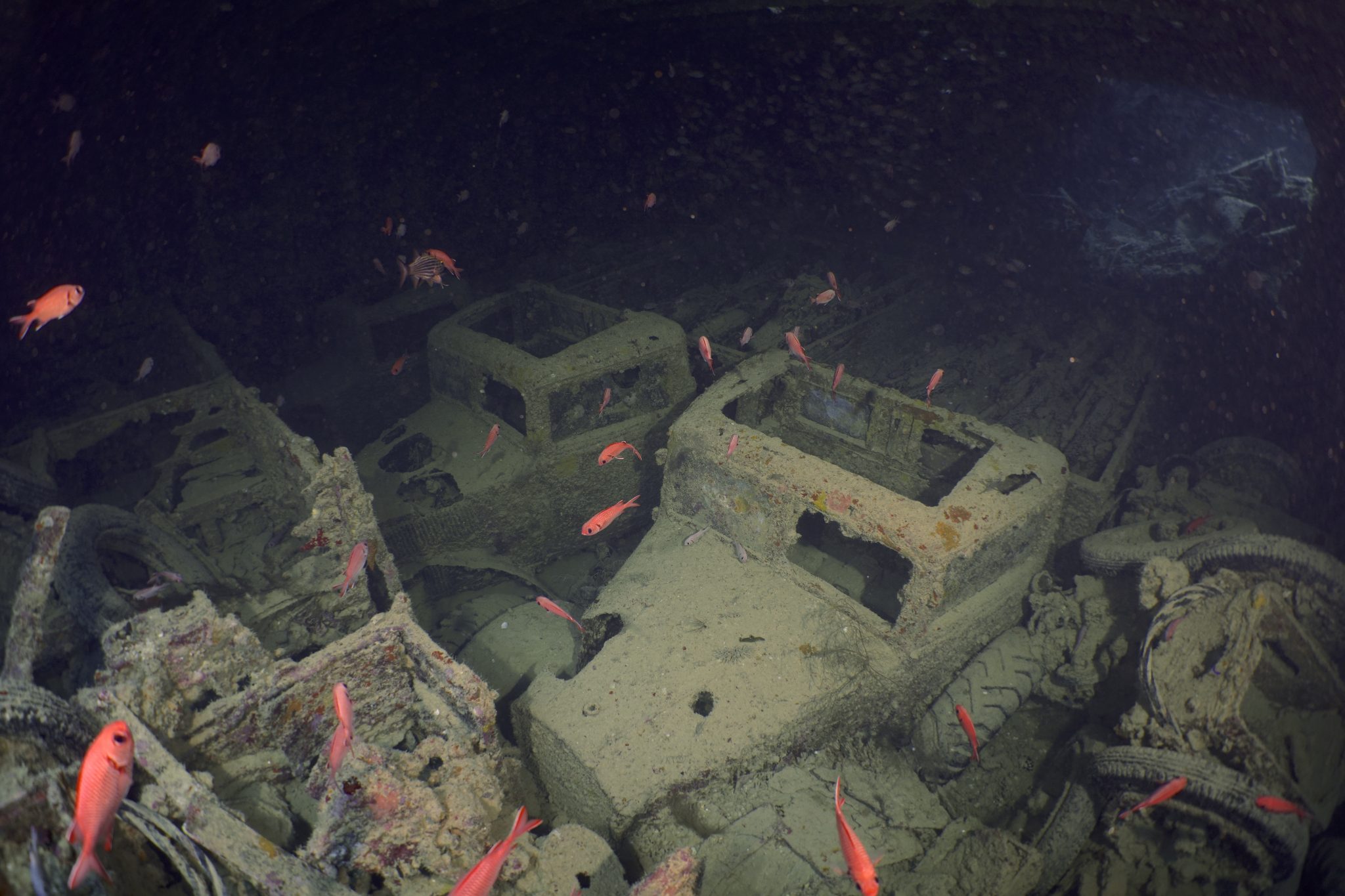
The final leg of the trip saw us cross back over the Suez Canal to the Gobal Islands where we planned to stay the night and do three dives at the Dolphin House for the potential of sharing the dive with dolphins. The site, which included a channel that was teeming with reef fish, especially large numbers of goatfish that swam in large shoals along the edge of the reef. These were nice relaxing dives to end the week. Unfortunately, the dolphins didn’t show up, which was okay as like all marine life they are difficult to predict and you can’t guarantee what’s going to be seen. With the last dive complete, we headed back to port for the final night where it was time to clean all the kit and pack before the departure flight the next day.
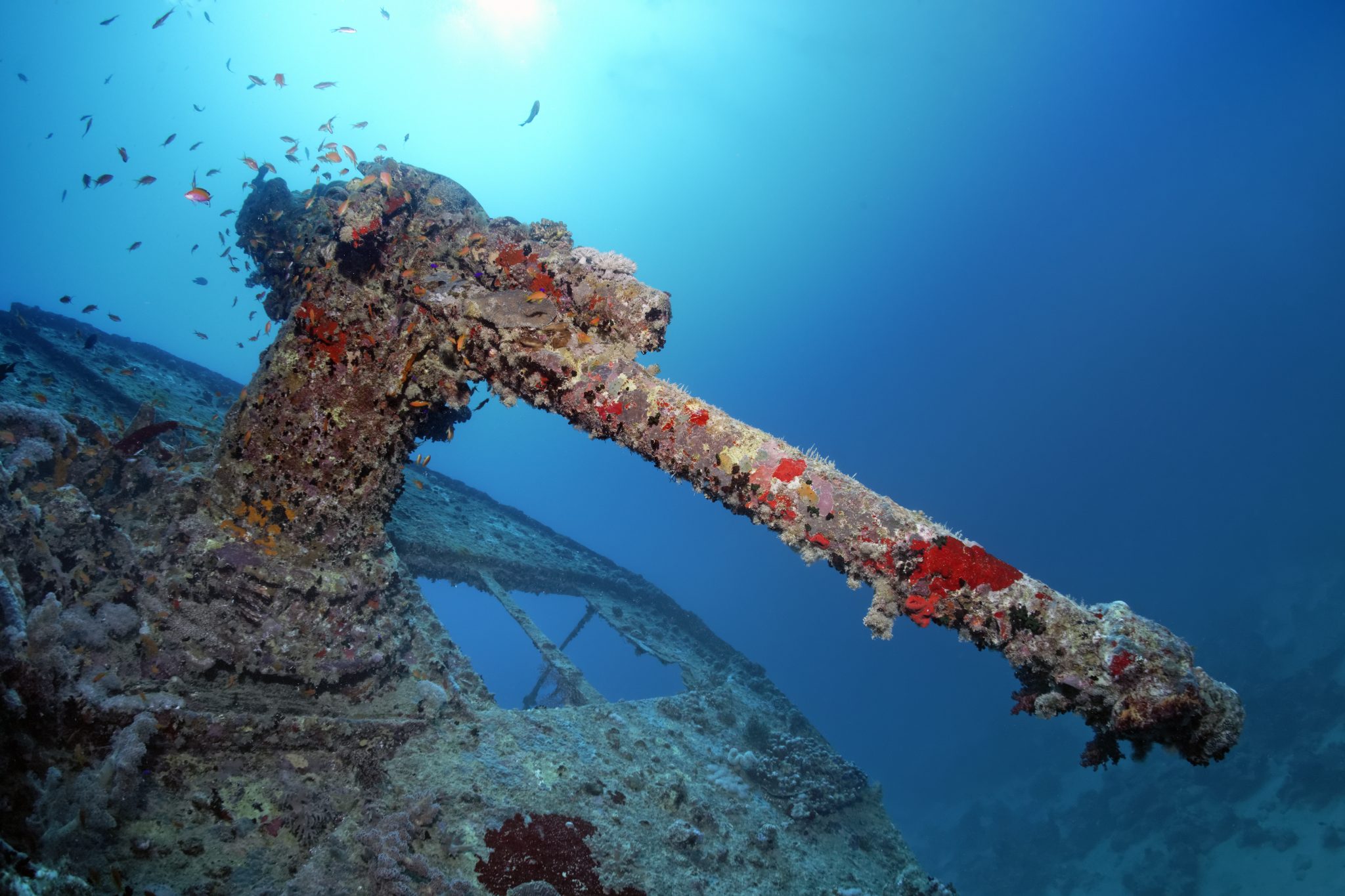
The whole week from start to finish on Ghazala Explorer was amazing; the boat had all the facilities you need for a comfortable week aboard. The crew were always there to help throughout the day and the chefs providing top quality food which was required after every dive. The itinerary providing some of the best diving with a nice mixture of wreck and reef dives. I would recommend the trip to anyone, whether it’s your first Red Sea liveaboard in the Red Sea or you’re revisiting. Hopefully, it’s not too long before I head back to explore more of the Red Sea onboard Ghazala Explorer.
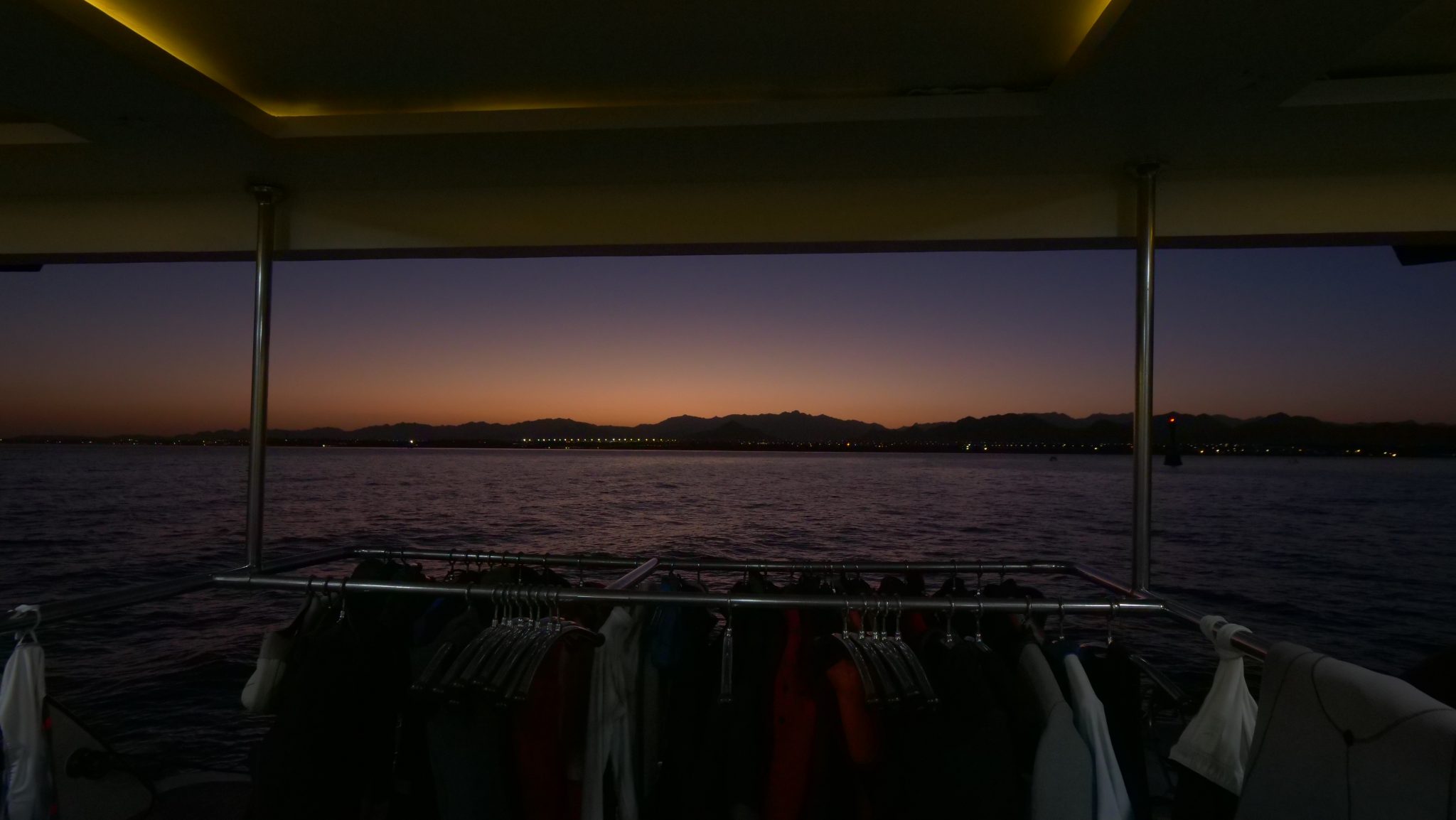
To find out more about the Northern Red Sea reef and wrecks itineraries aboard Ghazala Explorer, or to book, contact Scuba Travel now:
Email: dive@scubatravel.com
Tel: +44 (0)1483 411590
Photos: Jake Davies / Avalon.Red
-
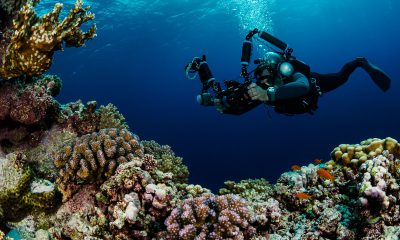
 News3 months ago
News3 months agoHone your underwater photography skills with Alphamarine Photography at Red Sea Diving Safari in March
-
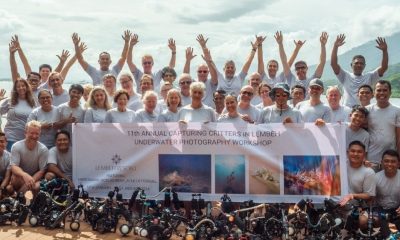
 News3 months ago
News3 months agoCapturing Critters in Lembeh Underwater Photography Workshop 2024: Event Roundup
-
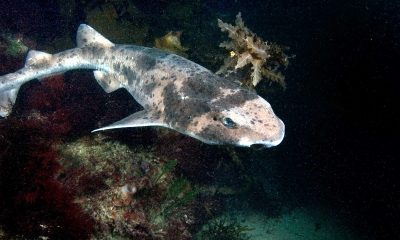
 Marine Life & Conservation Blogs2 months ago
Marine Life & Conservation Blogs2 months agoCreature Feature: Swell Sharks
-
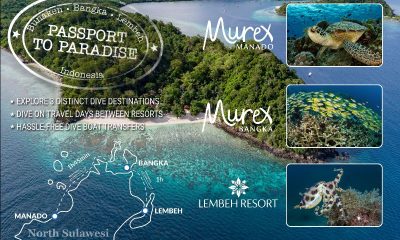
 Blogs2 months ago
Blogs2 months agoMurex Resorts: Passport to Paradise!
-
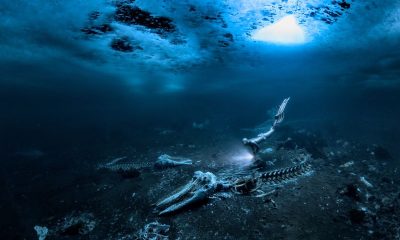
 Blogs2 months ago
Blogs2 months agoDiver Discovering Whale Skeletons Beneath Ice Judged World’s Best Underwater Photograph
-
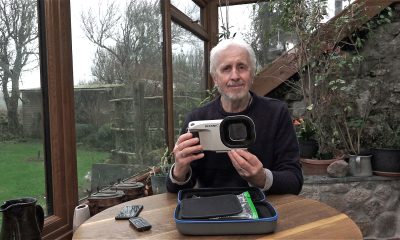
 Gear Reviews3 months ago
Gear Reviews3 months agoGear Review: Oceanic+ Dive Housing for iPhone
-
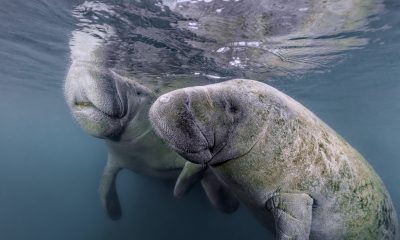
 Marine Life & Conservation2 months ago
Marine Life & Conservation2 months agoSave the Manatee Club launches brand new webcams at Silver Springs State Park, Florida
-
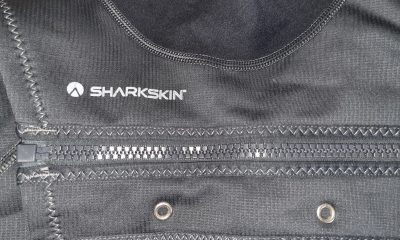
 Gear Reviews2 weeks ago
Gear Reviews2 weeks agoGEAR REVIEW – Revolutionising Diving Comfort: The Sharkskin T2 Chillproof Suit



